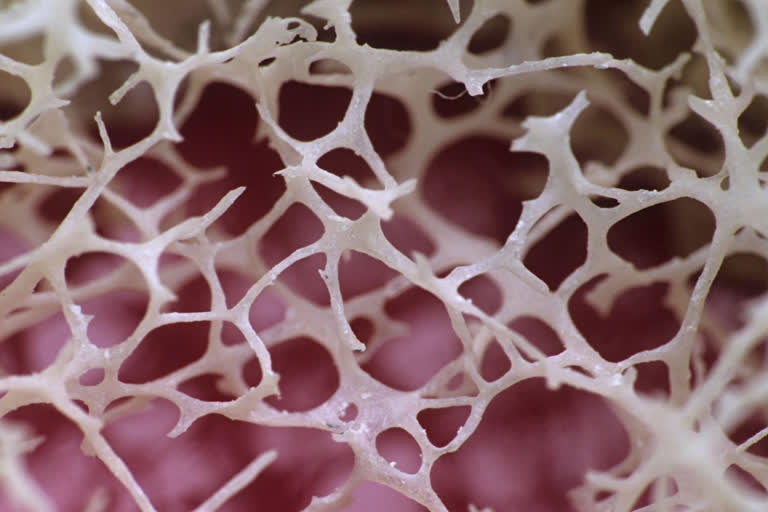Washington [US]: The spongy tissue found inside bones called bone marrow is in charge of producing platelets, white blood cells, and red blood cells. Anemia, blood malignancies, and dangerous infections are all more likely to occur as a result of bone marrow failure syndromes. Poikiloderma with neutropenia is a rare bone marrow failure illness that may have a potential treatment, according to research conducted by Washington University School of Medicine in St. Louis. Treatment options for additional bone marrow failure disorders with comparable underlying dysfunctions may also be affected by the research. The findings of the research were published in the journal Science.
Poikiloderma with neutropenia is caused by mutations in a gene called USB1. Despite knowing the genetic error that causes the disease, the specifics of what the error does to cause bone marrow failure have long been a mystery. When the bone marrow fails, the body can't make healthy red blood cells, white blood cells and platelets. People with these types of diseases are at increased risk of infections and are prone to developing skin and blood cancers.
"There are no cures for poikiloderma with neutropenia," said co-senior author Luis Batista, PhD, an associate professor of medicine, adding, "Patients are at high risk of dying from complications of infections, and scientists had no idea why mutations in this gene lead to bone marrow failure. In this new study, we found a novel role for an enzyme that opens the door to future clinical trials. There are investigational drugs that block this enzyme, so we are hopeful that clinicians who treat these patients may find this a promising strategy to pursue."
Studying human embryonic stem cells engineered to model this syndrome, the investigators, including co-senior author Roy Parker, PhD, of the University of Colorado, Boulder, found a problem with the processing of molecules called microRNA. The processing problem causes specific microRNA molecules to break down faster than they should. Without sufficient levels of these microRNAs, the stem cells can't develop into normal blood cells.
Also read: Study reveals how non-surgical treatment helps to reduce knee pain for adults over 50
"Our study shows that normal USB1 is cutting off the long tails of these microRNAs, which stabilizes their structure, giving them time to do their jobs forming blood products," said first author Hochang Jeong, PhD, a postdoctoral research associate in Batista's lab, adding, "When USB1 is mutated in this disease, these microRNA tails are much longer than they should be. We know that having longer tails makes microRNAs and other classes of RNA molecules more easily targeted for degradation. What we learned is there should be an equilibrium between the enzyme that puts the tails on and the enzyme that chops off the tails."
While there is not yet a known way to restore the ability to properly remove the tails, investigational drugs already exist that block the enzymes responsible for putting the tails on. Blocking this enzyme in this disease potentially could restore the equilibrium between the adding and subtracting of tails.
The enzymes responsible for adding the tails are called PAPD5 and PAPD7, and inhibitors of these enzymes have been investigated in human clinical trials for other diseases, including hepatitis B. For this study, the researchers used a PAPD5 inhibitor called RG7834. Preventing the addition of the long tail stabilized the structure of the microRNAs, increasing their levels and restoring normal blood cell formation by these stem cells. The researchers are working with industry partners to develop new PAPD5 and PAPD7 inhibitors that are specifically designed to treat this and similar conditions.
"We are working with different companies to develop better and more specific PAPD5 inhibitors to treat this rare syndrome," Batista said, adding, "In my lab, we are big advocates for the study of rare diseases. Combined, rare diseases are not rare at all, and these patients deserve our attention. PAPD5 inhibition is poised to be a potential treatment for other bone marrow failure syndromes." (ANI)



